Introduction
In the heart of Northern Vietnam, Nho Que River is a hidden gem waiting to be discovered. This enchanting river winds through the dramatic landscapes of Ha Giang Province. Thus, it offers visitors a feast for the eyes and a tranquil escape from the hustle and bustle of city life. Let’s embark on a visual exploration of Nho Que River, uncovering its beauty, history, and the myriad of activities it offers.

Location and Accessibility
The Nho Que River stretches along the border of Vietnam and China. Therefore, it is a geographically significant landmark. Accessible via Ha Giang, the river is best approached through the Ma Pi Leng Pass, which offers breathtaking views of the emerald waters snaking through deep gorges. Getting to Ha Giang typically involves a journey from Hanoi. The reason is that the trip can be done by bus or motorbike for the adventurous. Once in Ha Giang, local tours can guide you to the river, ensuring you don’t miss the most scenic routes.
Geological Features
 Carved by millennia of natural forces, Nho Que River is flanked by towering limestone cliffs and lush green valleys. Moreover, the river’s turquoise hue, a result of mineral deposits, contrasts beautifully with the rugged terrain, creating a picturesque setting that seems almost otherworldly. The Ma Pi Leng Pass, part of the Dong Van Karst Plateau Geopark, is a testament to the geological richness of the area. It offers panoramic views that highlight the river’s serpentine path.
Carved by millennia of natural forces, Nho Que River is flanked by towering limestone cliffs and lush green valleys. Moreover, the river’s turquoise hue, a result of mineral deposits, contrasts beautifully with the rugged terrain, creating a picturesque setting that seems almost otherworldly. The Ma Pi Leng Pass, part of the Dong Van Karst Plateau Geopark, is a testament to the geological richness of the area. It offers panoramic views that highlight the river’s serpentine path.
Flora and Fauna
 The river’s ecosystem is rich and diverse because it’s home to various species of plants and animals. The area has everything from vibrant wildflowers dotting the riverbanks to the occasional sighting of native birds and fish. Therefore, nature lovers will find plenty to marvel at along the Nho Que River. The dense forests and verdant hills surrounding the river provide habitats for many species, some of which are endemic to the region.
The river’s ecosystem is rich and diverse because it’s home to various species of plants and animals. The area has everything from vibrant wildflowers dotting the riverbanks to the occasional sighting of native birds and fish. Therefore, nature lovers will find plenty to marvel at along the Nho Que River. The dense forests and verdant hills surrounding the river provide habitats for many species, some of which are endemic to the region.
Historical Significance
Historically, Nho Que River played a crucial role as a trade route between Vietnam and China. In particular, the river facilitated the exchange of goods and culture, shaping the region’s development and fostering a unique blend of traditions that persist to this day. In addition, archaeological findings along the riverbanks suggest that these routes were vital for the trade of silk, spices, and other valuable commodities, linking remote communities to larger markets.
Cultural Influence
 The river is not just a natural wonder but also a cultural treasure. Specifically, the ethnic minority communities living along its banks have their customs and traditions, many of which are influenced by the river’s presence. From local legends to traditional festivals, Nho Que River is deeply woven into the cultural fabric of the area. These communities, including the Hmong and Tay people, celebrate their heritage through music, dance, and crafts, offering visitors a glimpse into their vibrant way of life.
The river is not just a natural wonder but also a cultural treasure. Specifically, the ethnic minority communities living along its banks have their customs and traditions, many of which are influenced by the river’s presence. From local legends to traditional festivals, Nho Que River is deeply woven into the cultural fabric of the area. These communities, including the Hmong and Tay people, celebrate their heritage through music, dance, and crafts, offering visitors a glimpse into their vibrant way of life.
Activities to Enjoy
Kayaking and Boating
 One of the best ways to experience Nho Que River is by getting on the water. Kayaking and boating tours offer a unique perspective. These tours allow visitors to immerse themselves in the serene beauty of the river while navigating its gentle currents. Moreover, these activities are suitable for both beginners and experienced paddlers, with guided tours providing safety and local insights.
One of the best ways to experience Nho Que River is by getting on the water. Kayaking and boating tours offer a unique perspective. These tours allow visitors to immerse themselves in the serene beauty of the river while navigating its gentle currents. Moreover, these activities are suitable for both beginners and experienced paddlers, with guided tours providing safety and local insights.
Hiking and Trekking
 For those who prefer to stay on land, the surrounding region offers excellent hiking and trekking opportunities. Trails range from easy walks to challenging hikes. All provide stunning vistas of the river and its dramatic surroundings. The trek through Ma Pi Leng Pass is particularly popular, offering some of the most spectacular views in Vietnam.
For those who prefer to stay on land, the surrounding region offers excellent hiking and trekking opportunities. Trails range from easy walks to challenging hikes. All provide stunning vistas of the river and its dramatic surroundings. The trek through Ma Pi Leng Pass is particularly popular, offering some of the most spectacular views in Vietnam.
Photography Hotspots
 Photographers will find Nho Que River an endless source of inspiration. Whether capturing the misty mornings, the vibrant sunsets, or the star-filled night skies, every moment spent here is a potential masterpiece. The contrasting colors and textures of the landscape provide endless opportunities for creative shots.
Photographers will find Nho Que River an endless source of inspiration. Whether capturing the misty mornings, the vibrant sunsets, or the star-filled night skies, every moment spent here is a potential masterpiece. The contrasting colors and textures of the landscape provide endless opportunities for creative shots.
Best Time to Visit
The best time to visit Nho Que River is during the dry season, from October to April, when the weather is mild and the skies are clear. This period offers the best conditions for outdoor activities and sightseeing. During these months, the river is calm and accessible, making it ideal for kayaking and boat tours.
Weather Considerations
While the rainy season from May to September brings lush scenery, it can also make travel challenging due to slippery roads and swollen rivers. Always check the weather forecast and plan accordingly to ensure a safe and enjoyable trip. The rain does enhance the verdant beauty of the region, so if you don’t mind a little rain, it can still be a worthwhile time to visit.
Local Culture and Traditions
The communities along Nho Que River celebrate several traditional festivals throughout the year. These events offer a glimpse into the local culture, with vibrant performances, traditional music, and delicious food. Joining a festival is a great way to enhance your visit and connect with the locals. Festivals such as the Gau Tao Festival of the Hmong people celebrate the new year and harvests with lively dances and communal activities.
Traditional Cuisine
 No trip to Nho Que River is complete without sampling the local cuisine. From savory dishes like Thang Co (a traditional soup) to sweet treats made from local ingredients, the food here is a delightful exploration of the region’s culinary heritage. Freshwater fish from the river, locally grown vegetables, and traditional herbs and spices make the cuisine unique and flavorful.
No trip to Nho Que River is complete without sampling the local cuisine. From savory dishes like Thang Co (a traditional soup) to sweet treats made from local ingredients, the food here is a delightful exploration of the region’s culinary heritage. Freshwater fish from the river, locally grown vegetables, and traditional herbs and spices make the cuisine unique and flavorful.
Travel Tips and Recommendations
While the area around Nho Que River is relatively remote, there are several accommodation options ranging from rustic homestays to comfortable guesthouses. Staying with a local family in a homestay can provide a more immersive cultural experience. Homestays often include home-cooked meals, giving visitors a taste of authentic local cuisine and hospitality.
Safety Tips
When visiting Nho Que River, it’s essential to prioritize safety. Wear appropriate footwear for hiking, stay hydrated, and be cautious when navigating the river, especially during the rainy season. Always follow local guidelines and respect nature to ensure a safe and enjoyable trip. You should inform someone of your itinerary and travel plans, especially if venturing into remote areas.
Packing Essentials
Packing for a trip to Nho Que River should include essentials like comfortable clothing, sturdy shoes, a hat, sunscreen, insect repellent, and a good camera. Don’t forget to bring a sense of adventure and curiosity to make the most of your exploration. A lightweight rain jacket and a small first-aid kit are also important, given the variable weather and remote locations.
Ready to witness the splendour of the Nho Que River? Start planning your trip with
YESD Travel today and immerse yourself in the visual feast that awaits.
Conclusion
Nho Que River is more than just a scenic destination; it’s a journey into the heart of nature and culture. Whether you’re an adventurer, a photographer, or someone seeking peace, the river has something to offer. Embrace the beauty, respect the traditions, and you’ll leave with memories that last a lifetime. This hidden gem of Vietnam invites you to explore its wonders, promising an unforgettable experience that touches both the eyes and the soul.
If you are ready to embark on this journey to explore Nho Que River and Ha Giang in general, have a look at our
Ha Giang tours to customize your most authentic experience.
FAQs
1. What makes Nho Que River unique?
Nho Que River is unique due to its stunning turquoise waters, dramatic limestone cliffs, and rich cultural heritage. It’s a natural wonder that offers both beauty and history, providing a captivating experience for all visitors. The combination of its geological formations and the vibrant cultures of the ethnic minority communities creates a distinctive and enriching destination.
2. How do I get to Nho Que River?
The river is accessible via Ha Giang Province. The most popular route is through the Ma Pi Leng Pass, which provides breathtaking views of the river. You can travel from Hanoi to Ha Giang by bus or motorbike, with local tours available to guide you to the best spots along the river.
3. What activities are available at Nho Que River?
Visitors can enjoy kayaking, boating, hiking, trekking, and photography. The river and its surroundings offer a variety of outdoor activities for all interests, from adrenaline-pumping adventures to peaceful nature walks. Exploring the river by boat or on foot allows for an intimate experience with the natural beauty of the area.
4. When is the best time to visit Nho Que River?
The best time to visit is during the dry season, from October to April, when the weather is ideal for outdoor activities and sightseeing. During this period, the conditions are perfect for exploring the river and enjoying the stunning landscapes.
5. Are there any special preparations needed for the trip?
It’s important to pack essentials like comfortable clothing, sturdy shoes, and insect repellent. Check the weather forecast and plan your activities accordingly for a safe and enjoyable visit. Additionally, having a good camera to capture the breathtaking views and a sense of adventure to fully embrace the experience will enhance your trip.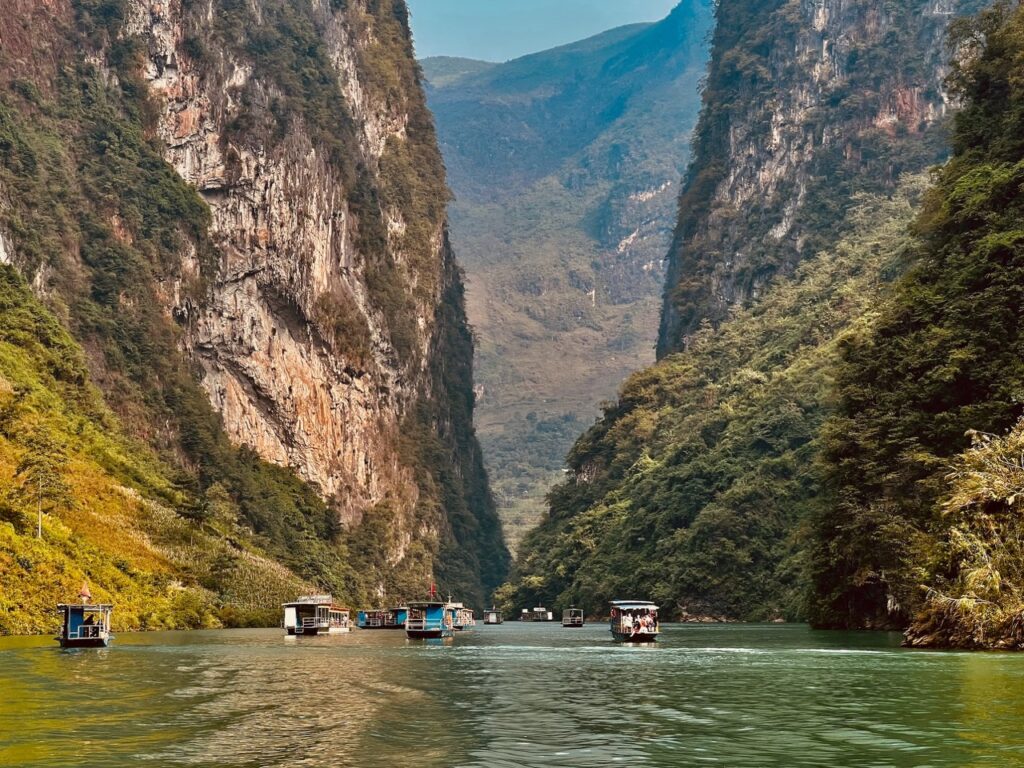
 Carved by millennia of natural forces, Nho Que River is flanked by towering limestone cliffs and lush green valleys. Moreover, the river’s turquoise hue, a result of mineral deposits, contrasts beautifully with the rugged terrain, creating a picturesque setting that seems almost otherworldly. The Ma Pi Leng Pass, part of the Dong Van Karst Plateau Geopark, is a testament to the geological richness of the area. It offers panoramic views that highlight the river’s serpentine path.
Carved by millennia of natural forces, Nho Que River is flanked by towering limestone cliffs and lush green valleys. Moreover, the river’s turquoise hue, a result of mineral deposits, contrasts beautifully with the rugged terrain, creating a picturesque setting that seems almost otherworldly. The Ma Pi Leng Pass, part of the Dong Van Karst Plateau Geopark, is a testament to the geological richness of the area. It offers panoramic views that highlight the river’s serpentine path.
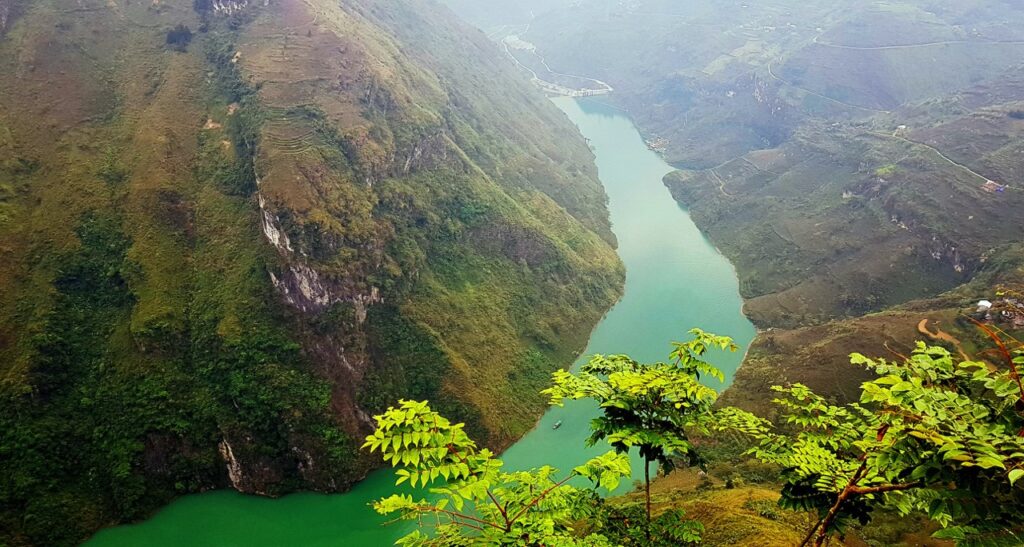 The river’s ecosystem is rich and diverse because it’s home to various species of plants and animals. The area has everything from vibrant wildflowers dotting the riverbanks to the occasional sighting of native birds and fish. Therefore, nature lovers will find plenty to marvel at along the Nho Que River. The dense forests and verdant hills surrounding the river provide habitats for many species, some of which are endemic to the region.
The river’s ecosystem is rich and diverse because it’s home to various species of plants and animals. The area has everything from vibrant wildflowers dotting the riverbanks to the occasional sighting of native birds and fish. Therefore, nature lovers will find plenty to marvel at along the Nho Que River. The dense forests and verdant hills surrounding the river provide habitats for many species, some of which are endemic to the region.
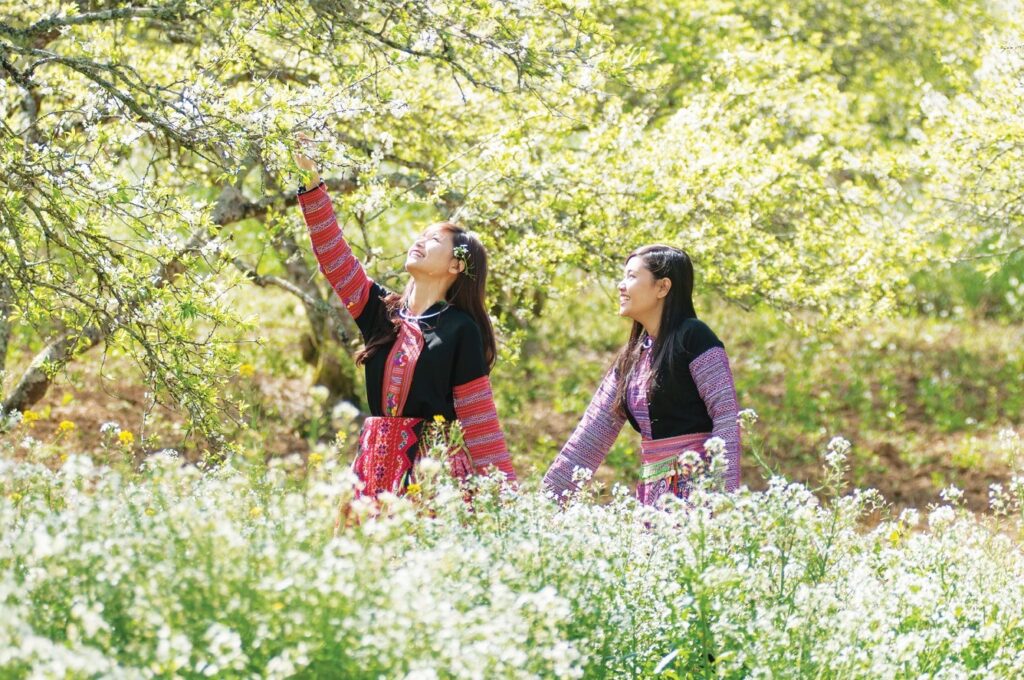 The river is not just a natural wonder but also a cultural treasure. Specifically, the ethnic minority communities living along its banks have their customs and traditions, many of which are influenced by the river’s presence. From local legends to traditional festivals, Nho Que River is deeply woven into the cultural fabric of the area. These communities, including the Hmong and Tay people, celebrate their heritage through music, dance, and crafts, offering visitors a glimpse into their vibrant way of life.
The river is not just a natural wonder but also a cultural treasure. Specifically, the ethnic minority communities living along its banks have their customs and traditions, many of which are influenced by the river’s presence. From local legends to traditional festivals, Nho Que River is deeply woven into the cultural fabric of the area. These communities, including the Hmong and Tay people, celebrate their heritage through music, dance, and crafts, offering visitors a glimpse into their vibrant way of life.
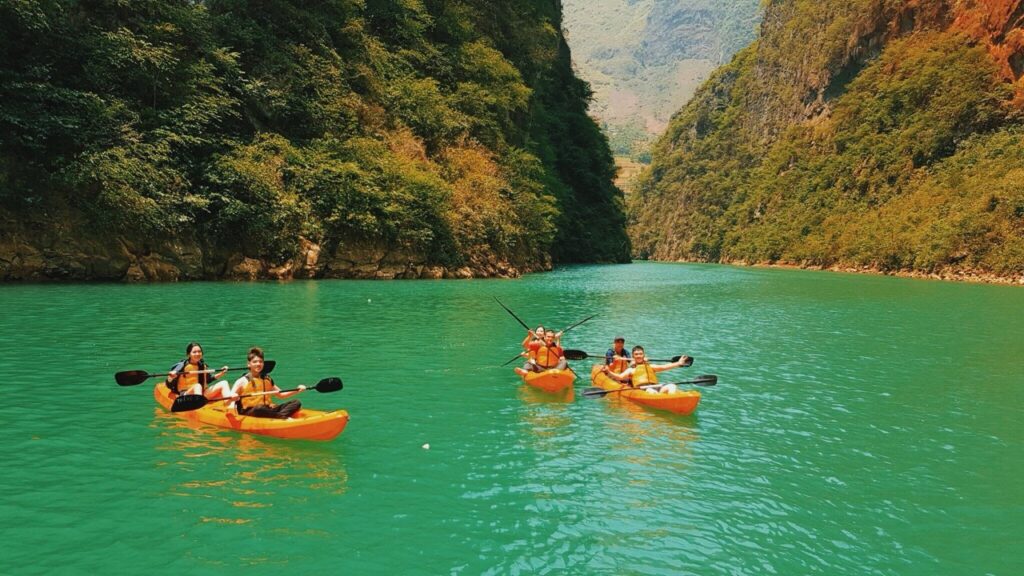 One of the best ways to experience Nho Que River is by getting on the water. Kayaking and boating tours offer a unique perspective. These tours allow visitors to immerse themselves in the serene beauty of the river while navigating its gentle currents. Moreover, these activities are suitable for both beginners and experienced paddlers, with guided tours providing safety and local insights.
One of the best ways to experience Nho Que River is by getting on the water. Kayaking and boating tours offer a unique perspective. These tours allow visitors to immerse themselves in the serene beauty of the river while navigating its gentle currents. Moreover, these activities are suitable for both beginners and experienced paddlers, with guided tours providing safety and local insights.
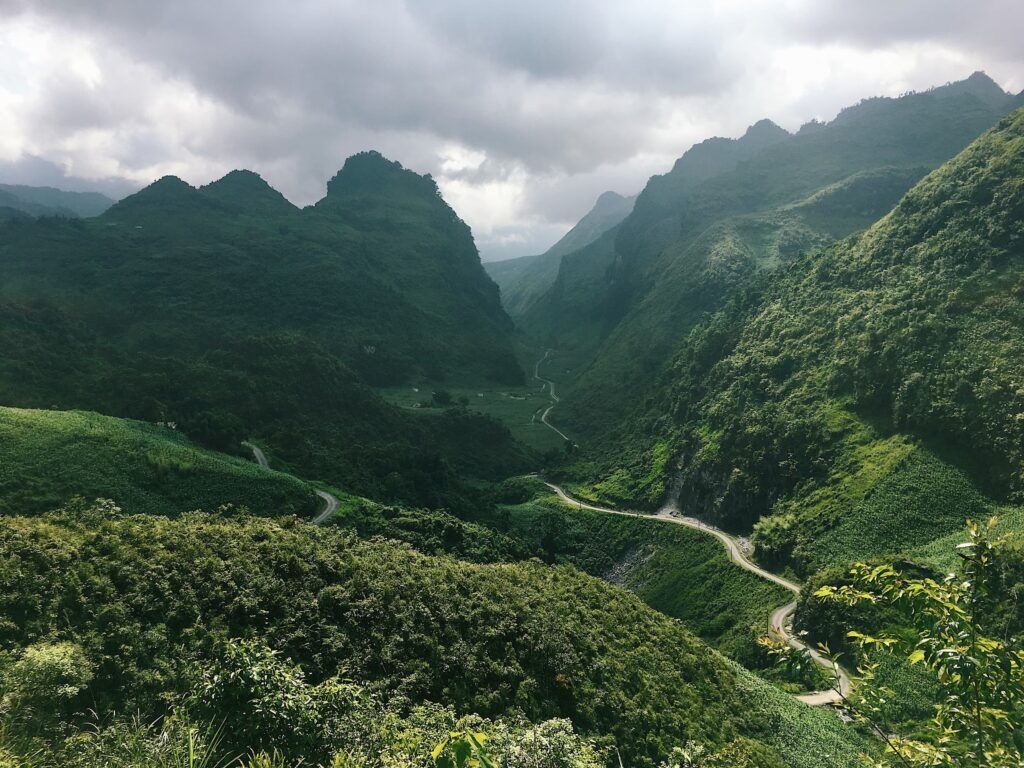 For those who prefer to stay on land, the surrounding region offers excellent hiking and trekking opportunities. Trails range from easy walks to challenging hikes. All provide stunning vistas of the river and its dramatic surroundings. The trek through Ma Pi Leng Pass is particularly popular, offering some of the most spectacular views in Vietnam.
For those who prefer to stay on land, the surrounding region offers excellent hiking and trekking opportunities. Trails range from easy walks to challenging hikes. All provide stunning vistas of the river and its dramatic surroundings. The trek through Ma Pi Leng Pass is particularly popular, offering some of the most spectacular views in Vietnam.
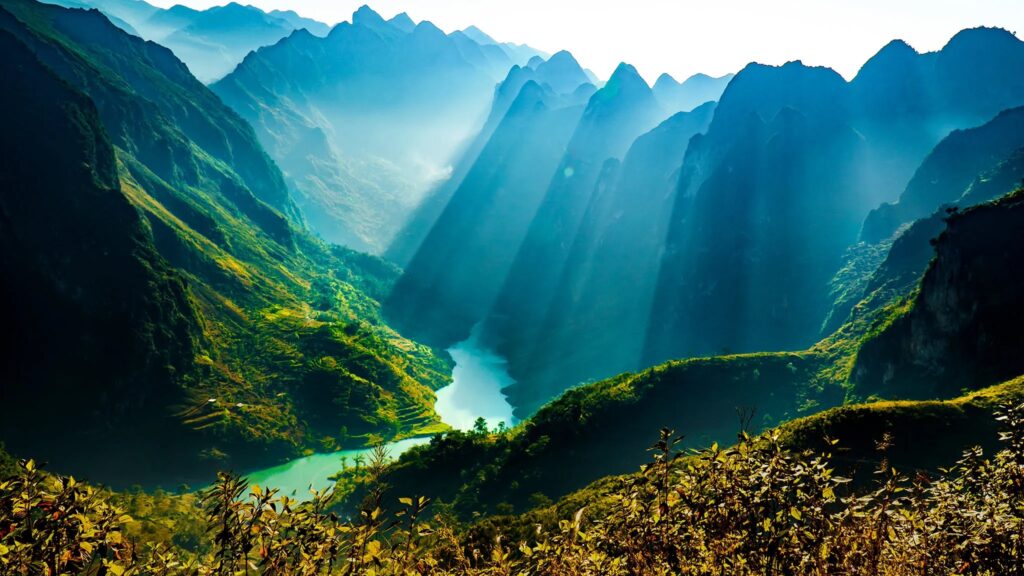 Photographers will find Nho Que River an endless source of inspiration. Whether capturing the misty mornings, the vibrant sunsets, or the star-filled night skies, every moment spent here is a potential masterpiece. The contrasting colors and textures of the landscape provide endless opportunities for creative shots.
Photographers will find Nho Que River an endless source of inspiration. Whether capturing the misty mornings, the vibrant sunsets, or the star-filled night skies, every moment spent here is a potential masterpiece. The contrasting colors and textures of the landscape provide endless opportunities for creative shots.
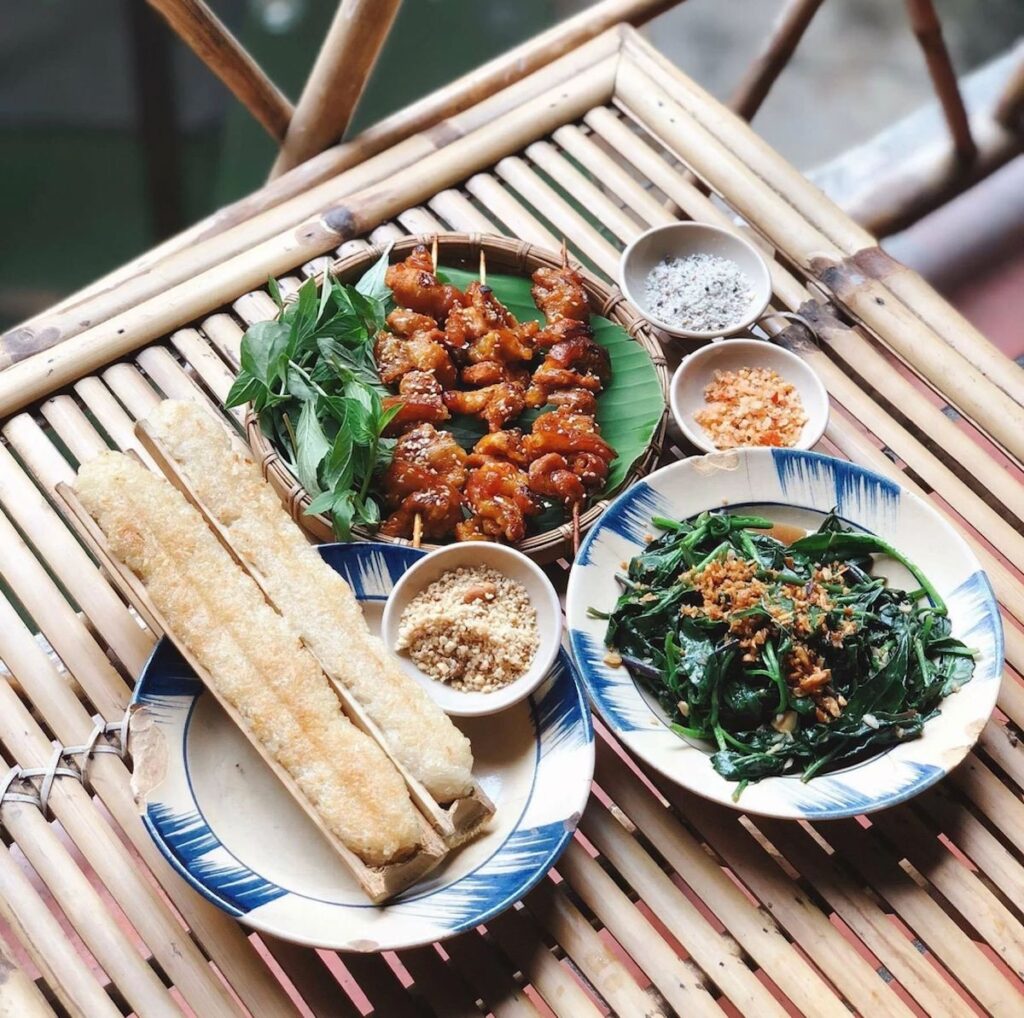 No trip to Nho Que River is complete without sampling the local cuisine. From savory dishes like Thang Co (a traditional soup) to sweet treats made from local ingredients, the food here is a delightful exploration of the region’s culinary heritage. Freshwater fish from the river, locally grown vegetables, and traditional herbs and spices make the cuisine unique and flavorful.
No trip to Nho Que River is complete without sampling the local cuisine. From savory dishes like Thang Co (a traditional soup) to sweet treats made from local ingredients, the food here is a delightful exploration of the region’s culinary heritage. Freshwater fish from the river, locally grown vegetables, and traditional herbs and spices make the cuisine unique and flavorful.
